VMBS Faculty Member Uses Passion For Parasitology In Research, Service, Teaching Roles
Story by Megan Myers, VMBS Communications
Explore a dynamic version of this story here.
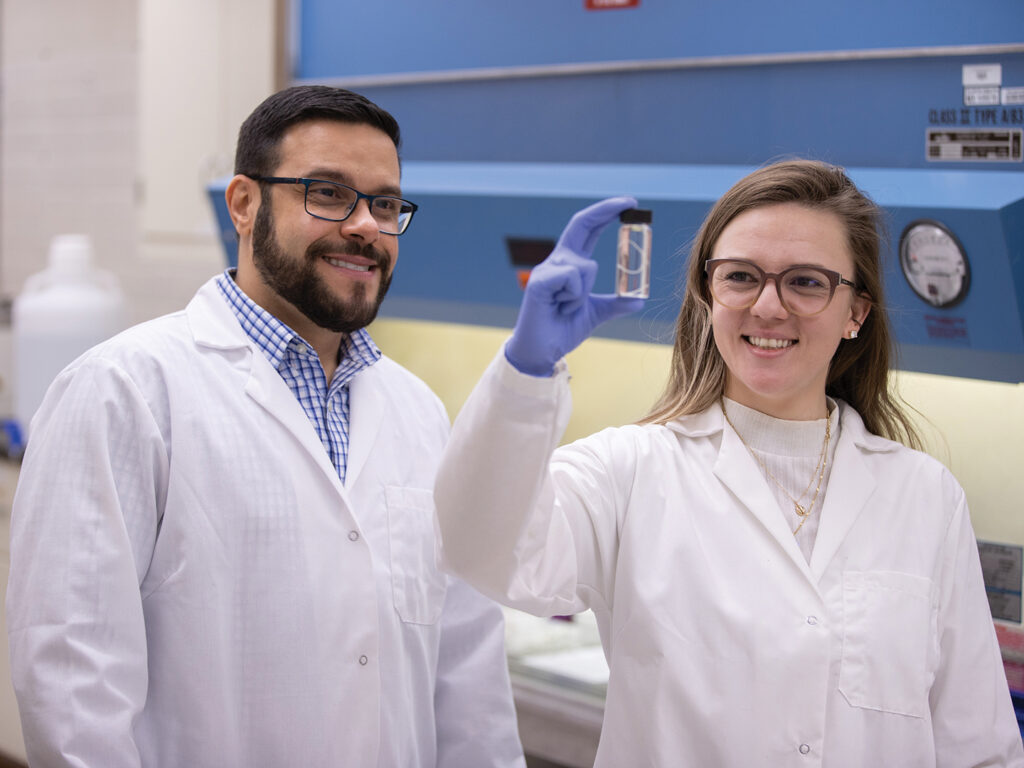
While many veterinarians will admit to having a favorite animal, worms are usually not at the top of the list.
For Dr. Guilherme Verocai, however, worms—specifically those that live parasitically inside another organism—are the most fascinating animals on the planet.
“Worms are my life,” said Verocai, a clinical assistant professor in the Texas A&M School of Veterinary Medicine & Biomedical Sciences’ (VMBS) Department of Veterinary Pathobiology (VTPB). “They’re pretty important, of course, in the medical and veterinary fields. But beyond that, they’re diverse and complex.
“They’re animals living in, on, or off another animal,” he continued. “They’re much more intelligent than viruses and bacteria. Evolutionarily speaking, they’re very evolved organisms; they had to adapt to this parasitic lifestyle, which, arguably, is the most successful lifestyle on Earth.”
Verocai’s fascination with parasitic worms, also known as helminths, has influenced his entire career, which has taken him from Brazil to Canada to Africa and, finally, to Texas A&M, where he keeps a busy schedule as an educator, researcher, and diagnostician.
Finding A Passion
Helminths first caught Verocai’s attention during his first year of veterinary school at the Universidade Federal Rural do Rio de Janeiro in Brazil.
“Early in vet school, I had courses in parasitology and I fell in love, basically,” he said. “I started doing parasitology research and I was a teaching assistant in parasitology, and I never left the research and teaching aspects.”
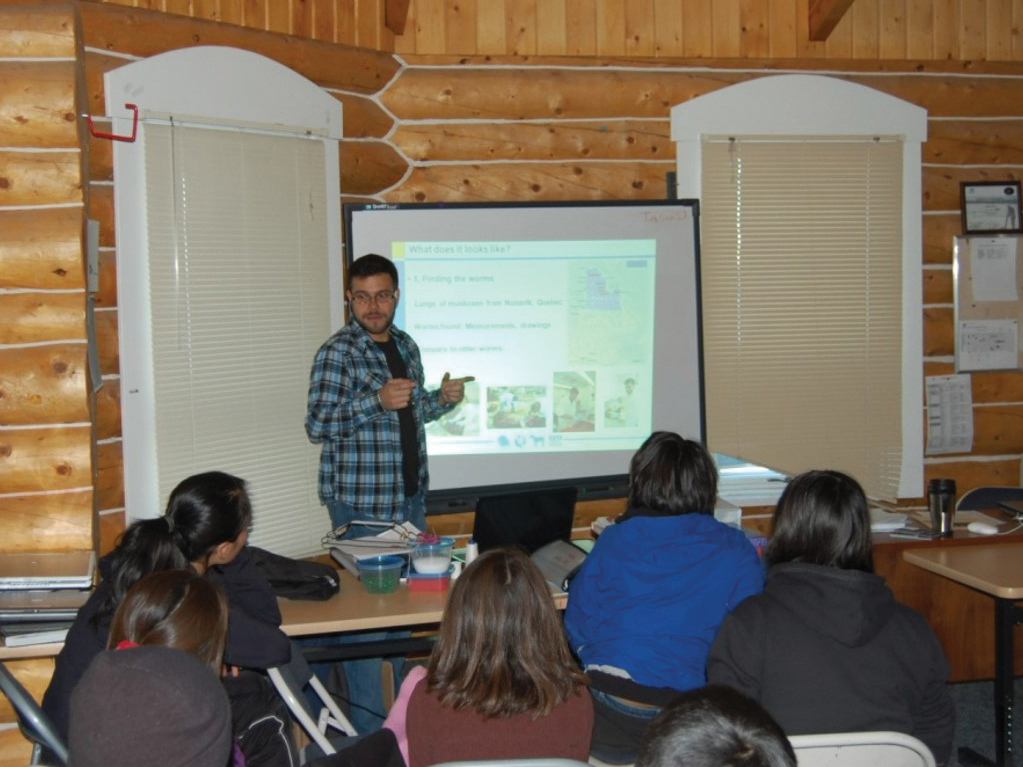
After earning his Doctor of Veterinary Medicine (DVM) degree in 2005 and a Master of Science degree in veterinary parasitology in 2008, Verocai decided to expand his horizons, quite literally, by enrolling in a Ph.D. program in Canada.
At the University of Calgary, he chose to pursue a secondary interest in wildlife medicine—while still keeping his focus on worms, of course.
“I ended up in a very nice university at the right time,” he said. “The graduate program in veterinary medicine at the University of Calgary was brand new, so there were a lot of excited professors coming in full of ideas, as well as a lot of grad students coming from a bunch of different places on Earth. It was a pretty fun, diverse, and inspiring place to be.”
Verocai’s research project there focused on discovering a new species of lungworm that scientists believed to be living in large mammals above the Arctic Circle.
“Before I got there, they had found larvae in feces of caribou, moose, and musk oxen, and we knew it was something new because they didn’t match the genetics of any related worms,” Verocai said. “I really wanted to discover one of the adults and describe this new species, and I had no doubt that I would find them.”
Native hunters, including the Inuit and Dene ethnic groups, sent the Canadian research team samples of lung tissue from caribou and musk oxen to search for adult specimens of the new species.
“It was like working in the dark because the worms didn’t cause any obvious pathology or any lesions in the lungs,” Verocai said. “We were cutting through, washing, and sieving the tissue samples to look for the hairlike worms, which were only a few centimeters long. It was a big moment when we found the first adult worms in the lungs of musk oxen from Northern Quebec.”
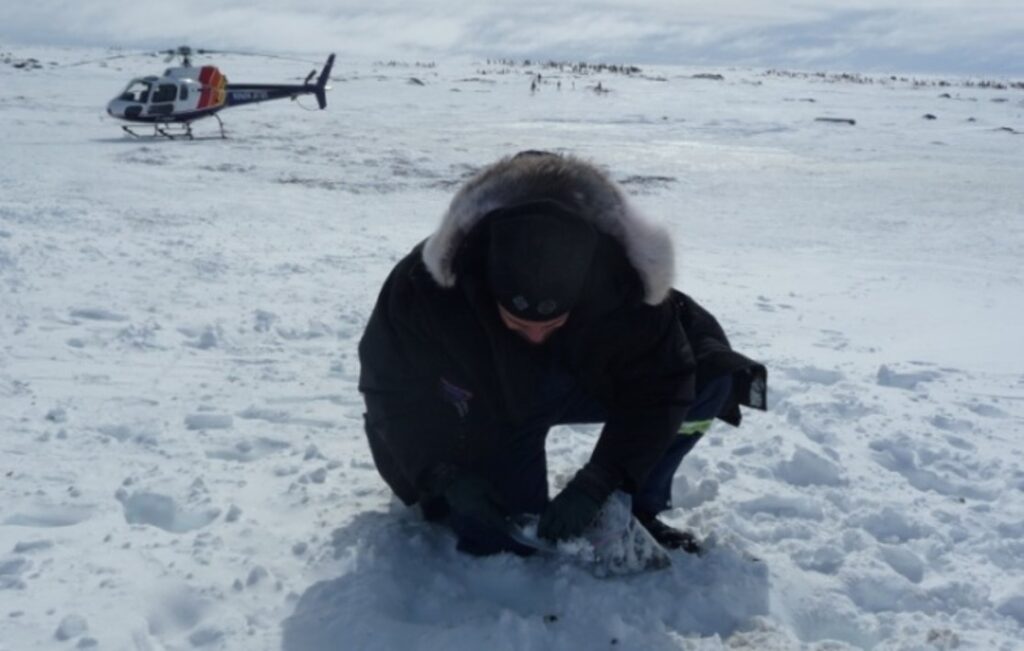
During the project, Verocai also spent a lot of time in Arctic regions, talking to native peoples and collecting samples.
“I’m from Rio de Janeiro, a beach town, and here I was collecting poop by helicopter and chasing musk oxen and caribou in sub-Arctic and Arctic areas,” he said with a laugh.
“We went from village to village, talking about veterinary medicine, wildlife health, and the importance of parasites,” he said. “Everything was being translated into their native language. It was a pretty interesting experience.”
When it came time to name the new species, Verocai’s team decided to credit the Sahtu Region of Canada’s Northwest Territories, where the lungworm larvae were first detected.
“We wanted to name it something meaningful for them in their native language because of the importance of caribou in their culture,” Verocai said. “In North Slavey, one of the dialects for the Dene people, they call the Arctic ‘elegu nene,’ or ‘cold land.’ Varestrongylus is the genus of the parasite, so we named it ‘Varestrongylus from the cold land,’ or Varestrongylus eleguneniensis.”
Back To Warmer Weather
Once Verocai earned his Ph.D. in 2015, he moved south to begin working as a postdoctoral researcher in the University of South Florida’s Department of Global Health, where he could study a pair of related parasites that he found especially interesting.
His main project, funded by the Bill & Melinda Gates Foundation, involved traveling to the West African country of Burkina Faso to study a nematode called Onchocerca volvulus that causes onchocerciasis, also known as river blindness, in people. This disease is one of the World Health Organization’s (WHO) top 20 neglected tropical diseases.
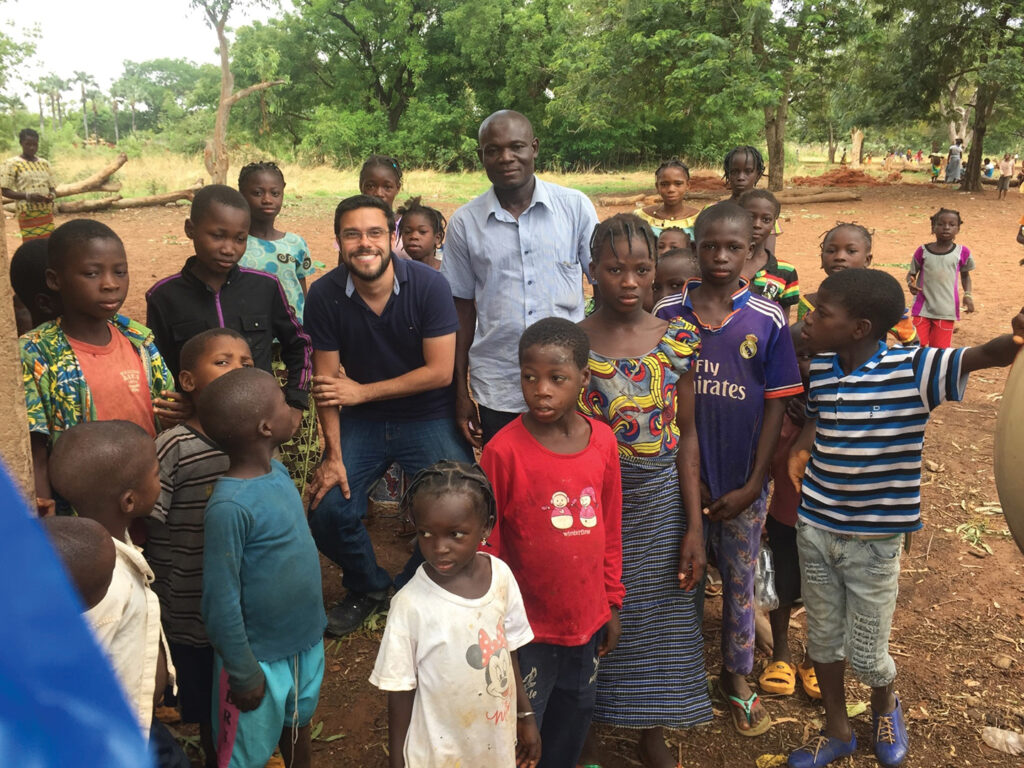
Verocai also went back to his veterinary roots and spent his spare time studying Onchocerca lupi, an obscure zoonotic parasite that causes a similar disease in dogs and cats.
He has continued to study O. lupi since he began his career at Texas A&M in November 2018; to this day, those searching the parasite on Google will find Verocai’s publications as two of the top three results.
“Parasites are a neglected part of biodiversity because, well, it’s tough to study them,” Verocai said. “Internal parasites, especially, are even more challenging to work with than external ones like fleas and ticks.”
Continuing to rise to this challenge, Verocai has taken on several new projects at the VMBS, including studying Dracunculus medinensis, also known as the Guinea worm.
The Guinea worm is similar to O. volvulus in that this nematode also causes one of the WHO’S top 20 neglected tropical diseases, dracunculiasis (Guinea worm disease). The project is also funded by another well-known organization, The Carter Center.
“The scientific community once thought it was strictly a human parasite, but then we realized that dogs; to a lesser extent, cats; and, in some countries like Ethiopia, baboons were acting as reservoirs and helping cycle the parasite,” Verocai said.
While the Guinea worm does not usually kill its host, it can cause blindness, blisters, and swelling, all of which negatively impact an individual’s livelihood, both physically and socially.
“Parasites are trying to survive like all of us and, most of the time, killing the host is not an ideal strategy for them to continue on,” Verocai said. “But there is still a big impact on health and general well-being, as well as an economic burden on the infected humans.”
This aspect of parasites translates to animal hosts as well, including pets and food animals.
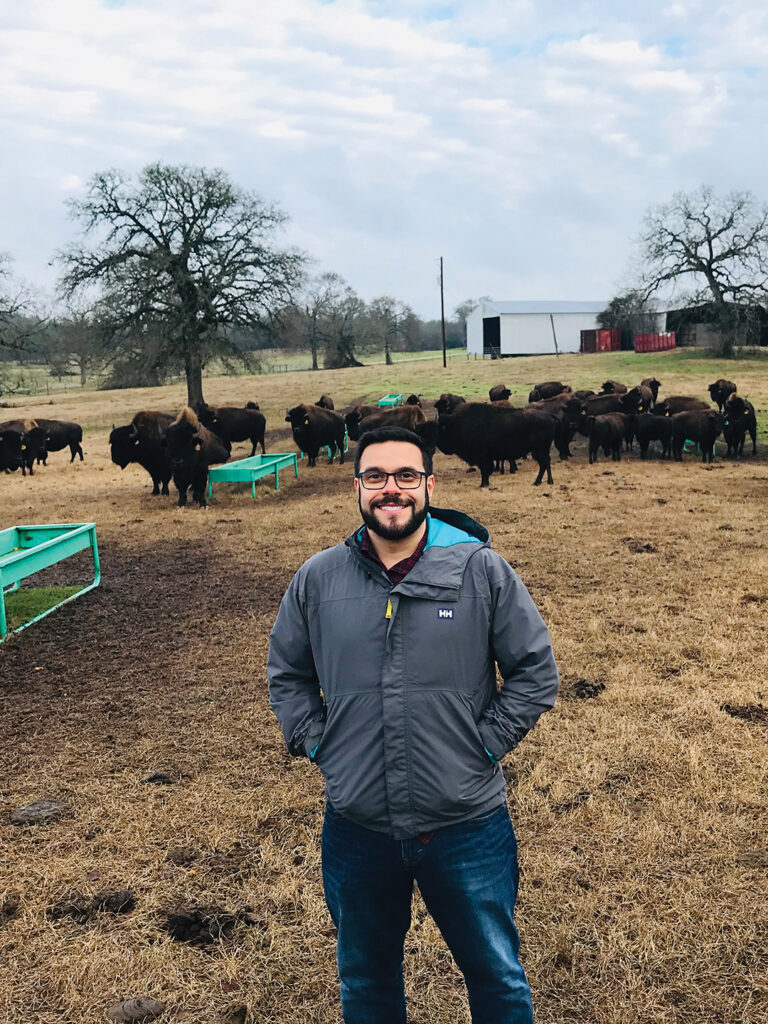
“That’s what a lot of parasites will do with our pets—the hosts are not dying, but they could be healthier; they’re not living their best life,” Verocai said. “Thinking about animal production, every infected animal is producing less than it could. That’s billions of dollars that go to waste because of parasites impacting production animals.”
Because of the far-reaching negative impacts of parasites on animals, one of Verocai’s roles at the VMBS is directing the Parasitology Diagnostic Laboratory, which helps veterinarians diagnose parasitic infections in companion animals, exotics, livestock, and wildlife.
“Diagnostics is a big portion of my appointment here,” he said. “It’s figuring out which parasites are present, plus triaging the biodiversity of parasites and figuring out what we don’t know. We will only know how to properly deal with things that we know about.”
These diagnostic services tie in with his research mission; one of Verocai’s current projects involves looking for new diagnostic markers for heartworms, a mosquito-borne parasite of dogs, and other helminths of veterinary and medical importance.
“Diagnostic markers, which are secretory/excretory products of the parasites, will be found in the organism they’re inside, circulating in biofluids like blood,” he said. “Right now, there are diagnostic markers for cancer and various other human diseases, but they are less explored in parasitology and veterinary medicine. There’s a whole world out there to be studied.
“We’ve had projects with heartworms and other filarial worms, trying to figure out which microRNAs they are excreting/secreting,” he said. “Then, for the Guinea worm, we’re adapting and expanding what we were doing for heartworms in a more global health direction. Ideally, we can use the same test to screen samples from any host species.”
Training The Next Generation
One final aspect of Verocai’s role at the VMBS is educating and mentoring students, from the veterinary students enrolled in his Agents of Disease courses to the graduate students and postdocs working in his lab.
“Teaching and mentoring are very rewarding,” Verocai said. “I’m trying to convince everybody that parasites are the most amazing things on Earth. Even though I might not be convincing enough, showing how much I care shows that parasites matter.”
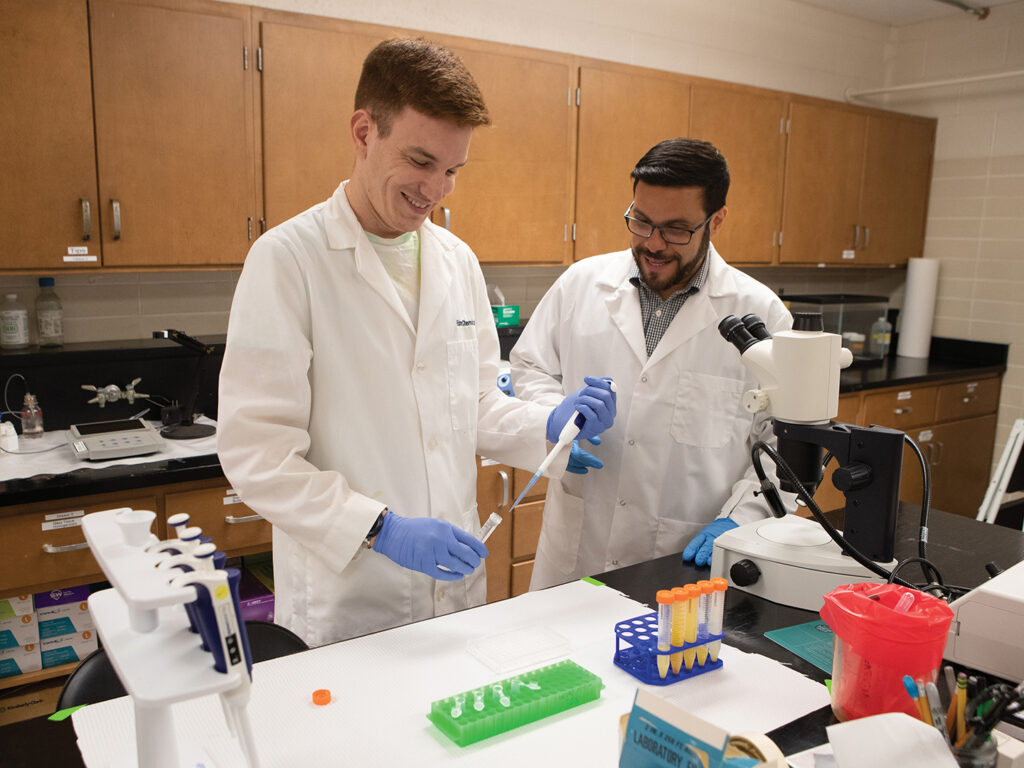
During the summer of 2021, as a mentor in the VMBS’ Veterinary Medical Scientist Research Training Program (VMSRTP), Verocai spent 14 weeks working with third-year veterinary student Hannah Danks to characterize a new species of lungworm in North American bison.
Recent research by the VMBS’ Dr. James Derr suggests that all bison in North America have some cattle DNA, so a logical assumption would be that the two species share the same parasites as well.
“Bison almost went extinct. How could they keep cycling their own parasites?” Verocai asked. “But when we looked at samples from different herds, they were not the same as the cattle lungworm. It seems that the bison lungworms are a success story of their own, a parasite that, like bison, survived from the brink of extinction.”
Verocai’s continued promotion of parasitology among Texas A&M’s DVM and graduate students and parasitology residents has already resulted in the formation of the Texas A&M Student Chapter of the American Association of Veterinary Parasitology, which he co-advises with clinical assistant professor Dr. Meriam Saleh.
“We’re trying to fill the gaps and make sure parasitology is there as a career opportunity,” he said. “Did I know I would be a parasitologist when I got into vet school? Of course not. If students do not perceive it as an option, it’s never an option.
“This is why I also have a commitment to diversity,” he continued. “I happen to be gay, I happen to be Brazilian, and that’s part of who I am. It matters. You need to see diversity to be able to respect it. It’s all about finding that passion.”
###
Note: This story originally appeared in the Winter 2023 edition of VMBS Today.
For more information about the Texas A&M College of Veterinary Medicine & Biomedical Sciences, please visit our website at vetmed.tamu.edu or join us on Facebook, Instagram, and Twitter.
Contact Information: Jennifer Gauntt, Director of VMBS Communications, Texas A&M College of Veterinary Medicine & Biomedical Sciences; jgauntt@cvm.tamu.edu; 979-862-4216


